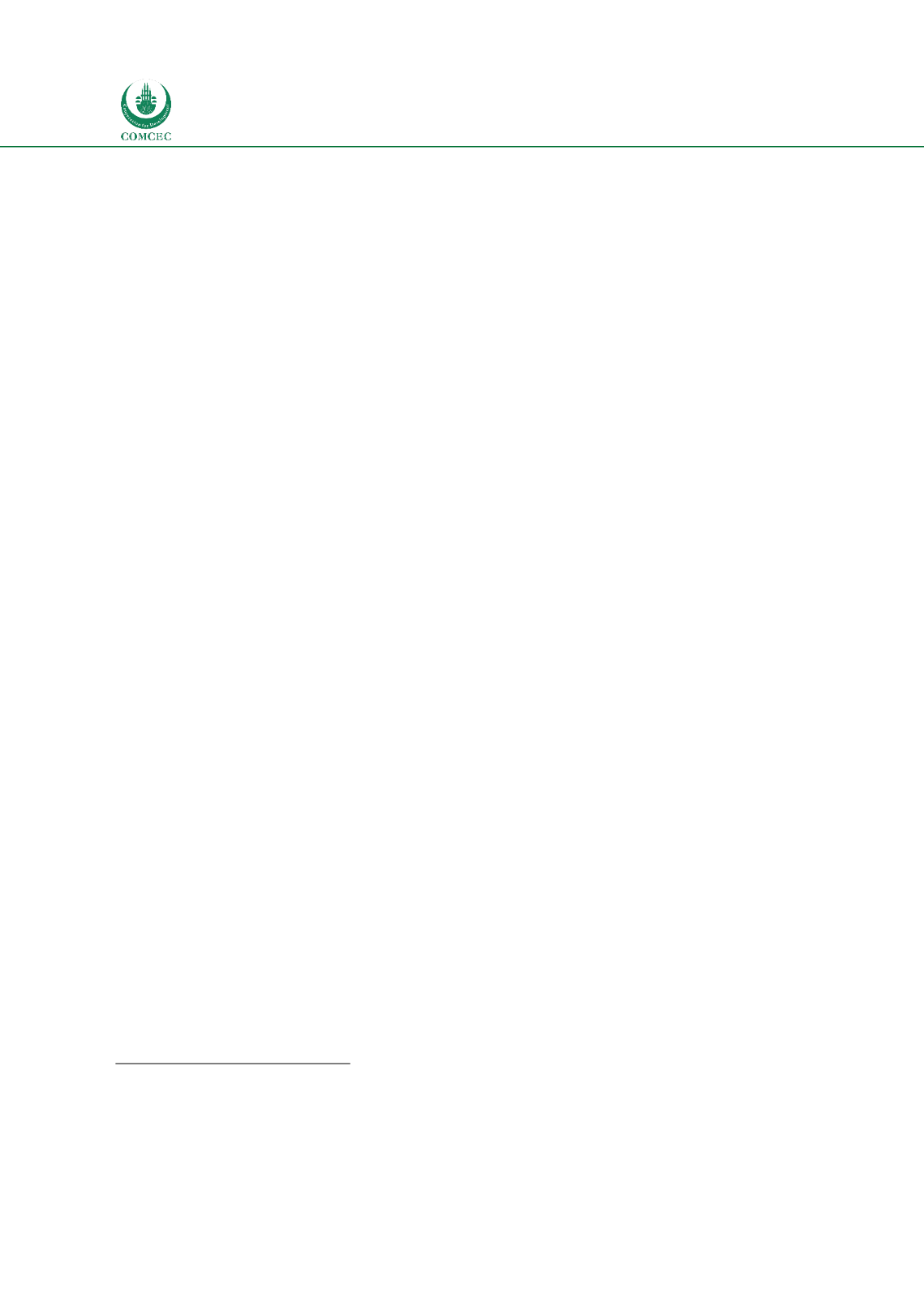

National and Global Islamic Financial Architecture:
Problems and Possible Solutions for the OIC Member Countries
102
4.6. Oman
Oman opened up to Islamic finance with the passage of the Royal Decree 69/2012 issued on 6
th
December 2012. The Banking Law 2012 that amended the Banking Law 114/2000 allowed the
opening of Islamic banks, Islamic windows and Islamic branches for foreign banks.
Furthermore, the Royal Decree 59/2014 issued on 10
th
November 2014 modified the capital
market law and authorizes a Capital Market Authority (CMA) to issue Sukuk regulations. In July
2013, the Muscat Securities Market (MSM) launched its Shari’a compliant index (TR
et.al, 2015:
36) and the first sukuk was issued in the country on 3
rd
November 2015 (MSM). CMA, which
also regulates the insurance industry, has issued a draft for Takaful Law that was approved by
Royal Decree 11/2016 issued on 6
th
March 2016. By the end of 2015, there were 20 banks in
the country, seven of which were local, nine were foreign, two were specialized, and two were
Islamic banks (CBO, 2015:38). Furthermore, six conventional banks had Islamic windows and
there were two
takaful
companies.
28
While Oman’s first Islamic bank started operations in January 2013, the sector has grown
rapidly both due to a sound legal and regulatory framework and also due to high pent-up
demand. In a short period of time, Islamic banking assets rose to OMR 1.07 billion (USD 2.78
billion) accounting for 4.4% of the banking assets in June 2014 (TR et. al 2015). Total assets in
Islamic banks and windows represent 7.4% of total assets in the banking sector in the last
quarter of 2015, compared to 5.2% and 3.6% in 2014 and 2013 respectively (CBO, 2015).
Moreover, it is expected that the total assets of Islamic banks and windows is to reach 10% of
total assets in the banking sector by 2018 (TR et. al. 2015: 12). This rapid growth is remarkable
when compared to other countries such as Indonesia where Islamic finance was initiated in
1992 and Islamic banking accounts to only 5% of the banking sector. According to the ICD-
Thomson Reuters Islamic Finance Development Indicators, Oman’s Islamic finance industry is
the world’s third most developed, behind Malaysia and Bahrain (TR et al. 2014: 9).
4.6.1. Legal Infrastructure
Supporting Islamic Finance Laws
The banking sector in Oman is governed by banking law and supervised by the Central Bank of
Oman (CBO). As indicated, the Banking Law 114/2000 was emended by royal Decree 69/2012
issued on 6
th
December 2012. A new Chapter 6 entitled “Islamic Banking” was added to
banking law making Islamic banking an integral part of banking law. The new chapter on
Islamic banking has six articles providing the basic elements of a legal framework and leaving
most of the details to regulations. Article 126 of the Banking Law strengthens the legal
standing of Islamic banking stating “all that contradicts or contravenes the amendments set
forth in the Islamic Banking Decree shall be revoked” (McMillen 2013: 4). Following the
amendment of the banking law, CBO issued Islamic Banking Regulatory Framework (IBRF) to
regulate Islamic Banks, Islamic Branches and Islamic Windows. In other words, a separate and
28
The first fully-fledged Islamic bank is Bank Nizwa which opened in year 2012, and the second is AlAizz Bank which
opened in year 2013. The six Islamic windows of the conventional banks are; Meethaq (Bank Muscat), Al Hilal (Ahli Bank) ,
Muzn (Natioanl Bank of Oman), Maisarah (Bank Dhofar), Sohar Islamic (Bank Sohar) and Al Yusr (Oman Arab Bank). Two
takaful companies are Al Madina insurance, Takaful Oman Insurance (CMA)
















